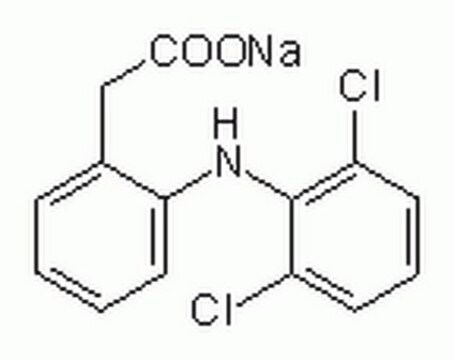338818
Hidróxido de amonio solution
28% NH3 in H2O, ≥99.99% trace metals basis
Sinónimos:
Agua amoniacal, Amoníaco acuoso
About This Item
Productos recomendados
Nivel de calidad
Análisis
≥99.99% trace metals basis
formulario
liquid
lim. expl.
27 %
concentración
28% NH3 in H2O
pH
11.7 (20 °C)
densidad
0.9 g/mL at 25 °C (lit.)
0.9 g/mL at 25 °C
temp. de almacenamiento
2-8°C
cadena SMILES
[NH4+].[OH-]
InChI
1S/H3N.H2O/h1H3;1H2
Clave InChI
VHUUQVKOLVNVRT-UHFFFAOYSA-N
¿Está buscando productos similares? Visita Guía de comparación de productos
Descripción general
Aplicación
- A medium to prepare magnetite (Fe3O4) nanoparticles via a modified controlled chemical coprecipitation method using divalent or trivalent iron salts as iron precursors.
- A reagent in ammonolysis.
- A solvent to synthesize 1, 4 dihydropyridines via one-pot condensation of an aldehyde and alkyl acetoacetate.
Palabra de señalización
Danger
Frases de peligro
Consejos de prudencia
Clasificaciones de peligro
Aquatic Acute 1 - Aquatic Chronic 1 - Eye Dam. 1 - Skin Corr. 1 - STOT SE 3
Órganos de actuación
Respiratory system
Código de clase de almacenamiento
8B - Non-combustible corrosive hazardous materials
Clase de riesgo para el agua (WGK)
WGK 2
Punto de inflamabilidad (°F)
Not applicable
Punto de inflamabilidad (°C)
Not applicable
Certificados de análisis (COA)
Busque Certificados de análisis (COA) introduciendo el número de lote del producto. Los números de lote se encuentran en la etiqueta del producto después de las palabras «Lot» o «Batch»
¿Ya tiene este producto?
Encuentre la documentación para los productos que ha comprado recientemente en la Biblioteca de documentos.
Artículos
Polar graphitic carbon (2.7 μm) based Ultra/High-performance liquid chromatographic separation of four highly polar pesticides, two polar herbicides―paraquat & diquat, and Vitamin D and its metabolites.
Dr. Schmuch, Dr. Siozios, Professor Dr. Winter, and Dr. Placke review the challenges and opportunities of nickelrich layered oxide cathode materials. They discuss production processes for the layered oxide cathode materials as well as their chemistry and morphology.
Protocolos
Separation of Tartrazine; Amaranth; Indigo carmine; New Coccine; Sunset Yellow FCF; Allura Red AC; Fast Green FCF; Erioglaucine disodium salt; Erythrosin B sodium salt; Phloxine B; Rose bengal
To optimize hydrolysis using β-glucuronidase, factors such as incubation time, temperature, hydrolysis pH, enzyme source, and enzyme concentration must be evaluated for each glucuronide metabolite to be analyzed.
Nuestro equipo de científicos tiene experiencia en todas las áreas de investigación: Ciencias de la vida, Ciencia de los materiales, Síntesis química, Cromatografía, Analítica y muchas otras.
Póngase en contacto con el Servicio técnico





